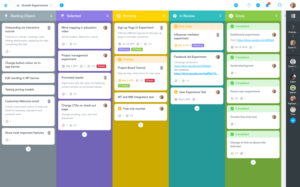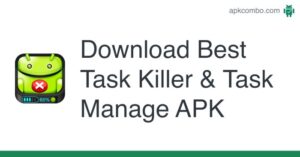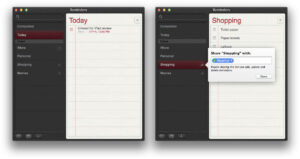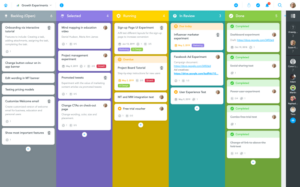Best for parental control – In the digital age, where children are increasingly immersed in the online world, parental control has become an indispensable tool for parents seeking to protect their kids from potential dangers and ensure their well-being. This guide delves into the essential features, user experience, compatibility, reporting capabilities, and security measures of parental control software and devices, providing a comprehensive overview to empower parents in making informed decisions about the best solutions for their families.
Parental Control Features: Best For Parental Control
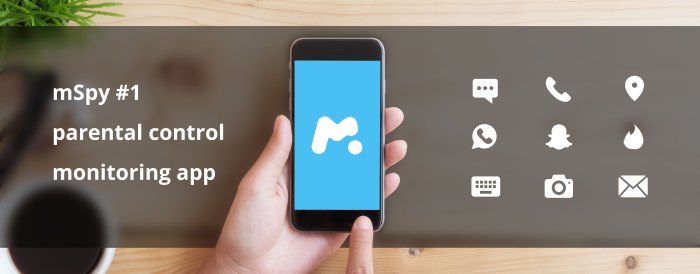
Parental control features in software and devices empower parents to monitor and restrict their children’s online activities, ensuring their safety and well-being in the digital realm. These features provide various levels of control and customization, allowing parents to tailor the online environment to their children’s specific needs and developmental stages.
Monitoring Features, Best for parental control
Monitoring features enable parents to track their children’s online activities, providing insights into their browsing history, app usage, and communication.
- Web Browsing History:Parents can view a record of the websites their children visit, including the time spent on each site and the search terms used.
- App Usage Monitoring:Parents can track which apps their children are using, the frequency of use, and the time spent within each app.
- Social Media Monitoring:Parents can monitor their children’s social media activity, including posts, comments, and messages, to identify potential risks or inappropriate behavior.
- Location Tracking:Some devices offer location tracking features, allowing parents to track their children’s physical location, providing peace of mind and ensuring safety.
Filtering and Blocking Features
Filtering and blocking features allow parents to restrict access to specific content or websites that they deem inappropriate for their children.
- Website Blocking:Parents can create a list of websites or categories of websites that their children are not allowed to access.
- Content Filtering:Parents can filter out specific types of content, such as violence, pornography, or gambling, from their children’s online experience.
- App Blocking:Parents can block specific apps that they consider inappropriate or harmful to their children.
Time Management Features
Time management features allow parents to set limits on their children’s screen time and online activities.
- Screen Time Limits:Parents can set daily or weekly limits on the amount of time their children can spend on their devices.
- App Time Limits:Parents can set time limits for specific apps, ensuring that their children do not spend excessive time on certain apps.
- Bedtime Mode:Parents can set a bedtime for their children, after which all devices will be automatically locked, promoting healthy sleep habits.
Communication and Reporting Features
Communication and reporting features provide parents with additional tools to stay informed about their children’s online activities and to communicate with them about online safety.
- Activity Reports:Parents can receive regular reports on their children’s online activities, including a summary of websites visited, apps used, and time spent online.
- Parent-Child Communication:Some parental control apps offer features for parents to communicate with their children directly within the app, allowing them to discuss online safety and set expectations.
- Emergency Alerts:Parents can set up emergency alerts that will notify them if their children encounter potentially harmful content or engage in risky online behavior.
User Interface and Ease of Use
The user interface of parental control software and devices plays a crucial role in determining the overall user experience. A well-designed interface makes it easy for parents to set up, navigate, and customize the software or device to meet their specific needs.
When evaluating the user interface of parental control solutions, consider factors such as:
- Clarity and simplicity: The interface should be clear and easy to understand, with minimal clutter and distractions.
- Intuitive navigation: The navigation should be intuitive, allowing parents to easily find the features they need without getting lost or confused.
- Customization options: The software or device should offer a range of customization options, allowing parents to tailor the settings to their unique preferences.
A user-friendly interface can greatly enhance the overall parental control experience. It makes it easier for parents to set up and manage the software or device, ensuring that it effectively protects their children online.
Ease of Setup
The ease of setup is a key factor to consider when choosing parental control software or devices. Parents should be able to quickly and easily set up the software or device without encountering any technical difficulties.
Some factors that contribute to ease of setup include:
- Clear and concise instructions: The software or device should come with clear and concise instructions that guide parents through the setup process.
- Automatic device detection: The software or device should be able to automatically detect the devices that need to be protected, reducing the need for manual configuration.
- Pre-configured settings: The software or device may come with pre-configured settings that are suitable for most parents, making it even easier to get started.
By choosing a parental control solution that is easy to set up, parents can save time and effort, ensuring that their children are protected online as soon as possible.
Intuitive navigation is essential for a positive user experience with parental control software or devices. Parents should be able to easily find the features they need and navigate through the interface without getting lost or confused.
Some factors that contribute to intuitive navigation include:
- Logical menu structure: The menu structure should be logical and easy to follow, with related features grouped together.
- Clear labeling: The menus and buttons should be clearly labeled, making it easy for parents to identify the features they need.
- Search functionality: The software or device may include a search functionality, allowing parents to quickly find the features they are looking for.
By choosing a parental control solution with intuitive navigation, parents can save time and effort, ensuring that they can quickly and easily access the features they need to protect their children online.
Customization Options
Customization options allow parents to tailor the parental control software or device to meet their unique needs and preferences. This can include setting different levels of restrictions for different children, creating custom filters, and scheduling screen time limits.
Some factors that contribute to robust customization options include:
- Flexible settings: The software or device should offer a range of flexible settings, allowing parents to customize the level of protection for each child.
- Customizable filters: The software or device may allow parents to create custom filters to block specific websites, apps, or content.
- Scheduling options: The software or device may allow parents to schedule screen time limits, ensuring that their children are not spending too much time on their devices.
By choosing a parental control solution with robust customization options, parents can ensure that the software or device meets their specific needs and provides the level of protection they desire for their children.
Compatibility and Integration
Parental control software and devices should be compatible with a wide range of operating systems and devices to ensure effective monitoring and control across various platforms. Seamless integration with existing devices and platforms enhances parental control capabilities by providing a comprehensive and cohesive solution.
For instance, parental control solutions like Qustodio, Net Nanny, and Kaspersky Safe Kids offer cross-platform compatibility, allowing parents to manage and monitor their children’s online activities across smartphones, tablets, laptops, and desktops running different operating systems such as iOS, Android, Windows, and macOS.
Reporting and Monitoring
Parental control software and devices provide robust reporting and monitoring capabilities that empower parents to stay informed about their children’s online activities. These features enable parents to track their children’s website visits, app usage, and screen time, giving them a comprehensive view of their online experiences.
In today’s digital age, parental control is essential to protect children online. While there are numerous parental control apps available, it can be challenging to determine the best option. To help you make an informed decision, consider exploring reputable resources that provide comprehensive reviews and recommendations.
Additionally, consider reading articles like How to earn money in GCash legit , which can provide insights into the latest trends and best practices in parental control.
Customizable reporting options allow parents to tailor the monitoring process to their specific needs. They can choose to receive regular reports via email or text message, summarizing their children’s online activities during a specified period. Real-time notifications can also be set up to alert parents to any suspicious or concerning behavior, such as accessing inappropriate websites or spending excessive time on certain apps.
Real-Time Notifications
Real-time notifications are a crucial feature of parental control software and devices. They provide parents with immediate alerts whenever their children engage in activities that may raise concerns. For example, parents can set up notifications for:
- Visiting websites on a predefined list of blocked or restricted categories (e.g., pornography, gambling, violence)
- Using apps that are deemed inappropriate for their age or maturity level
- Spending excessive time on social media or gaming platforms
- Communicating with unknown or suspicious individuals online
By receiving real-time notifications, parents can promptly address any potential issues and have timely conversations with their children about online safety.
Security and Privacy
Parental control software and devices prioritize protecting children’s online safety. They implement robust security measures to safeguard their data and privacy while browsing the internet.
Encryption Protocols
- Industry-standard encryption protocols, such as Secure Sockets Layer (SSL) and Transport Layer Security (TLS), are employed to encrypt data transmitted between the child’s device and the parental control service’s servers.
- This encryption ensures that any intercepted data remains unreadable, protecting children’s personal information, browsing history, and other sensitive data from unauthorized access.
Data Protection Practices
- Parental control providers adhere to strict data protection practices to ensure the confidentiality and integrity of children’s data.
- They employ access controls, data anonymization techniques, and regular security audits to prevent unauthorized access, data breaches, and misuse of personal information.
- Furthermore, many providers offer additional privacy features, such as the ability for parents to control the collection and use of their children’s data.
Outcome Summary
Ultimately, the best parental control solution is one that aligns with the specific needs and preferences of each family. By considering the factors Artikeld in this guide, parents can confidently select a tool that effectively monitors and protects their children’s online activities, fostering a safe and responsible digital environment for their young ones to explore and learn.

